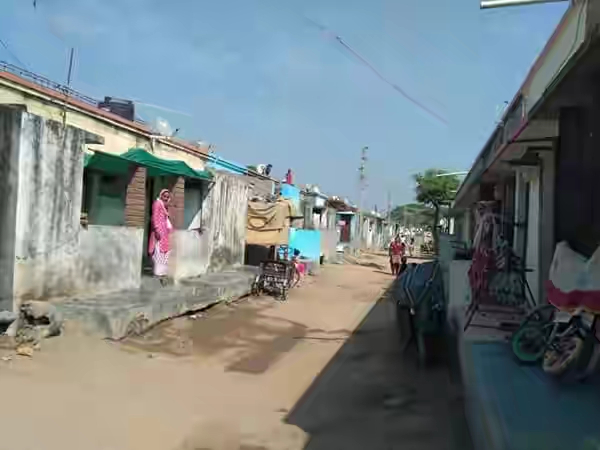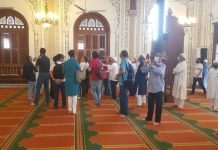Survivors of 2002 Gujarat riots still live a wretched life sans govt aid
By Mahesh Trivedi siyasat.net Ahmedabad
Star-crossed survivors of India’s bloody Hindu-Muslim riots in 2002 have still been leading a dog’s life, thanks to the lackadaisical attitude of the government in Prime Minister Narendra Modi’s wealthy home state of Gujarat.
Even 18 years after the country’s worst anti-Muslim pogrom that left 2,000 people dead and thousands maimed, some 3,500 dirt-poor, displaced families continue to live in sub-human conditions in tumbledown dwellings in surroundings stinking to high heaven in 83 rehabilitation colonies in eight districts across the western Indian state.
The 17,000-odd unfortunate residents, all Muslims, lack even the basic amenities like proper roads, streetlights, drinking water, sewage pipes, and make do without public clinics and schools. And this despite making countless representations to the authorities in the past five years, and selfless non-government organizations (NGOs) like Jan Vikas, Jan Sangharsh Manch, Niswan, ANHAD and Bharatiya Muslim Mahila Andolan time and again holding protest demonstrations demanding justice, rehabilitation and compensation for the victims.

With as many as 200,000 people rendered homeless during the three-month-long intermittent, barbarous clashes that erupted on February 27, 2002, the 83 relief clusters, including 15 in Ahmedabad, were hurriedly built by Jamait-e-Ulema-e-Hind, Islamic Relief Committee, etc as temporary shelters.
But with kill-crazy militant Hindu organizations striking terror here, there and everywhere, the worried families never returned to their ransacked houses and instead made the squalid, fly-infested shanty colonies their permanent residence.
“We still can’t even go back to our own homes where we stayed before the riots because we are witnesses in many riot cases and the headstrong accused are out on parole. Hence we fear for our lives,” said riot survivor Abdul Sheikh who lost his wife and six children in the violent communal conflagration that erupted and spread throughout Gujarat after 59 Hindus were charred to death in a train fire near Godhra railway station in central Gujarat on February 27, 2002.
Indeed, in the absence of any address proof documents left behind in their riot-ravaged houses, the down-at-heel families also have no access to the government’s beneficiary schemes for the have-nots in Gujarat which has witnessed large-scale riots at least six times in the past 50 years, the worst one in 2002 under the watch of Modi himself.
“They have not been given alternative homes by the state government, and plot owners of as many as 61 of the 83 colonies have not handed them ownership rights even after 18 years. With land prices going through the ceiling, the hard-up residents are always on tenterhooks, fearing eviction any day,” says Hozefa Ujjaini, a dedicated activist of Jan Vikas, an NGO which has been taking up the cudgels for the riot-hit since 2002.

Gagan Sethi, a self-effacing human rights activist and Jan Vikas founder, told twocircles.net that there was a need to bring about a fundamental change in the way the riot victims are seen, adding that in UN terminology, they are defined as internally displaced persons and hence deserve all government benefits.
He opined that the state government should at least make special programme and budgetary allocation for provision of basic amenities for riot-affected families under the Prime Minister’s New 15-point programme.
Says Gujarat High Court advocate Shamshad Pathan, who has been tirelessly working for the riot-hit with heart and soul to seek justice for them: “The saffron government in Gujarat has not come out with a rehabilitation policy for them. They have become the scapegoats of a convenient game of passing the buck being played among various departments”.
According to Abdul Hafiz Lakhani, general secretary of the Gujarat unit of the All India Milli Council, these families suffered huge losses in the 2002 riots but there is no hope of justice and little possibility of help from the political class. Every family in these colonies lost family, homes, possessions or businesses in the riots, which led to greater segregation and marginalization, he adds.
Independent analysts said that 2,000 men, women and children, mostly Muslims, were killed in the 2002 riots that also saw destruction of 302 dargahs, 209 mosques and 13 madrasas and put the property loss to Muslims at Rs 2.44 billion.
But the state government controlled by a pro-Hindu national party, the Bharatiya Janata Party (BJP), maintained that the beastly clashes had claimed lives of only 790 Muslims and 254 Hindus. As Congress leader Arjun Modhwadia said, the ruling BJP and its biased administration did not stir a finger to build houses for the riot victims and distributed only peanuts as compensation.
It was left to the NGOs like Jan Vikas who kept knocking at the doors of legal courts to secure a square deal for the affected families. Effective micro-level monitoring of investigation and prosecution of major carnage cases by Citizen for Justice and Peace had led to the conviction of 120 rioters, including a former influential woman minister who was awarded life imprisonment.
The Society for Promotion of Rationality, an award-winning charity, had quickly offered a sterling yeoman’s service by helping save an academic year for over 20,000 students (as riots happened right before the end of the academic year), securing modest compensation and basic livelihood for hundreds of riot-hit, aiding 3,000 victims in rebuilding their ramshackle dwellings and saving precious lives by supplying critical medicines.
In other words, the deep and dangerous chasm between Hindus (80 per cent of population) and Muslims (10 percent) in saffronised Gujarat means that the ostracized minority community is forced to live in ghettos and there is not the ghost of a chance of even a well-heeled Muslim acquiring a house in a Hindu locality.
Under the circumstances, the 17,000 riot-affected people in relief colonies living on a wing and a prayer can only bank on NGOs even as yet another communal clash broke out in coastal Khambhat town in central Anand district on February 23 in which 20 shops and houses as well as 15 vehicles of Muslims were set ablaze by Hindu rioters. (courtesy, twocircles.net) The writer is an Ahmedabad-based senior journalist and editor of a daily newsletter on Smart English).
































